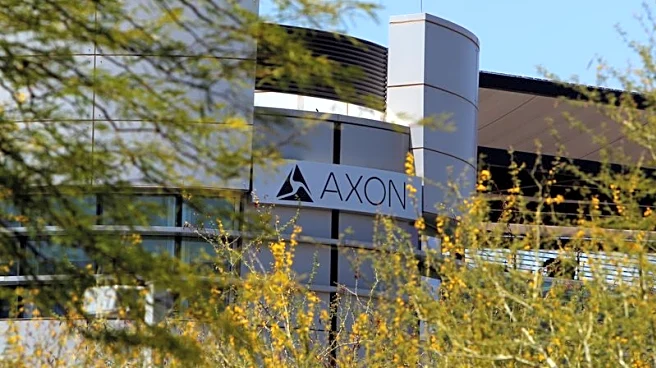What's Happening?
AGCO, a prominent equipment manufacturer, reported third-quarter sales of $2.476 billion in 2025, surpassing trade expectations of $2.461 billion. The company's adjusted earnings per share were $1.35,
exceeding forecasts of $1.22. Despite these positive financial results, AGCO anticipates a challenging end to 2025 and a flat 2026. The company attributes this outlook to ongoing trade concerns, high borrowing costs, and input expenses. AGCO's North American agricultural segment is expected to remain weak, with a 32% decline in sales during the third quarter, primarily due to reduced demand for high-horsepower tractors, sprayers, and combines. However, AGCO's European and Middle Eastern business is performing well, with a 20% increase in sales year-over-year, driven by a recovery in production levels and sales of high-horsepower and mid-range tractors.
Why It's Important?
AGCO's financial performance and outlook are significant for the agricultural equipment industry, which is grappling with trade uncertainties and economic pressures. The company's strong sales in Europe and the Middle East highlight regional disparities in market performance, with North America facing challenges. The anticipated rough end to 2025 and flat 2026 could impact AGCO's strategic decisions, investments, and workforce planning. Stakeholders, including investors and industry partners, may need to adjust their expectations and strategies in response to AGCO's projections. The company's performance also reflects broader trends in the agricultural sector, where trade policies and economic conditions play crucial roles.
What's Next?
AGCO's future strategies may involve focusing on strengthening its European and Middle Eastern operations while addressing challenges in North America. The company might explore cost-cutting measures, efficiency improvements, or strategic partnerships to mitigate the impact of trade concerns and high costs. Industry analysts and investors will likely monitor AGCO's performance closely, especially in light of potential changes in trade policies or economic conditions that could affect the agricultural equipment market.












